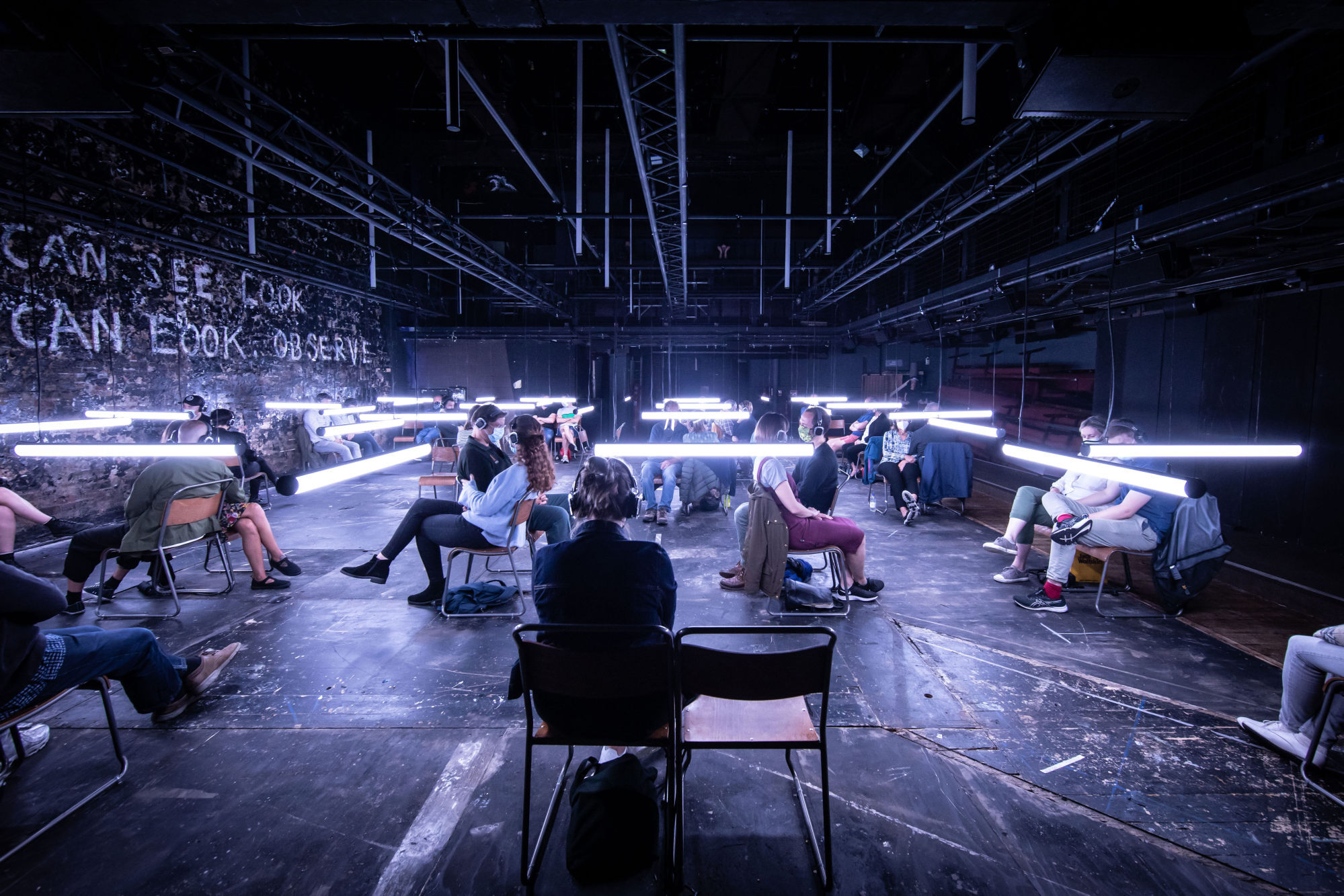
Review | Blindness, adaptation of José Saramago’s novel, a technical tour de force that makes the audience actors in a drama they can only hear
- José Saramago’s novel about a civilisation torn asunder by contagion can be a metaphor for many things and will resonate with Hongkongers
- This adaptation makes it an almost exclusively aural experience bar the intermittent darkness and flashes of light, one that makes you value human connection
Blindness is, technically, a light and sound installation. Yet this adaptation by playwright Simon Stephens vividly captures the complex scenario in José Saramago’s original novel and its convincing portrayal of civilisation unravelling at the first sign of contagion. The narrative is delivered entirely through actress Juliet Stevenson’s lone, disembodied voice.
This Donmar Warehouse production for the Hong Kong Arts Festival takes the idea of a radio play to a whole new level. The emotional eloquence of Stevenson’s voice was captured through a three-dimensional “binaural” recording technique. The surround sound headphones issued to each member of the audience make it seem as if she is right there in the Freespace theatre.
Plot-wise, it matters little that we cannot see her, for we are transported to a world where there is a pandemic of sudden blindness.
With the audience’s vision restricted by darkness and occasional, blinding flashes of white light, one’s ears are entirely tuned to that one voice. It moves around the theatre/quarantine centre, screaming at the soldiers shooting desperate inmates indiscriminately, and barbaric opportunists bartering food for money and sex, and then comes back to you, her blind husband, and her voice becomes a confiding whisper so close that you can feel her breathe tickling your ear.

The audience are arranged in neat, socially distanced rows. At first, they are bathed in the dim light projecting from hanging neon rods that resemble a three-dimensional Mondrian grid.
The rods change their configuration during the play. In one scene when Stevenson describes the horror of being trapped in a room with blind strangers, all left to rot when the government has collapsed, the light rods are lowered to the eye level of the seated audience and their intermittent, blinding flashes simulate the empty whiteness that is the symptom of those afflicted in the play and of course, a symbol of our general blindness to what is happening in society.
‘It’s three-dimensional sound … and terrifying in the darkness’
The audience are warned beforehand that there are moments when all lights are turned off and they have to sit in the pitch dark, in order to feel the full terror of being suddenly struck blind and being completely helpless and alone. Unfortunately, that doesn’t really happen because there is light emitting from all the headset and it is enough to illuminate the outlines of everyone sitting in the theatre.
That is a minor shortcoming.
The power of Blindness is that it doesn’t just conjure up the Covid-19 crisis (the director Walter Meierjohann, who began working on the adaptation in 2004, has said adamantly that it is not about the pandemic). Here in Hong Kong, the audience will inevitably see parallels with the political developments of the past few years.

Meierjohann himself has been prompted by different events to work on the stage adaptation over the years: the rise of far right fascism in Germany, the global financial crisis of 2008-9, and the growing nationalism in Britain that resulted in Brexit. The possibilities for interpretation are endless.
Just as important as its content is the form of Blindness. The way it is staged shows how physical theatre can survive the onslaught of free, virtual programmes.
A colour-blind artist talks about his ‘gift and curse’
In contrast, the in-person experience of Blindness in a controlled environment is the true theatre experience (special kudos to sound designers Ben and Max Ringham). The audience are essentially the only actors present in the theatre, its members filling the roles of the blind detainees in a quarantine centre.
The seating arrangement means that most people sit directly opposite a stranger. The natural reaction is to avoid direct eye contact. But as the play progresses, the ability to see (at least for the sighted members of the audience) is no longer taken for granted. As the light comes on at the end of the play, looking at each other becomes less awkward, as people acknowledge the beauty of being connected in the here and now.
Blindness runs until April 18 at The Box, Freespace, West Kowloon Cultural District.

